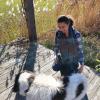Groups joined
Groups
Group
- Latest Resource
- /
- Underwater advertisement call of the threatened Telmatobius rubigo (Anura: Telmatobiidae
In a recent publication we tested Underwater Passive Acoustic Monitoring (UPAM) as a feasible non-invasive technique to study the calling behavior of therathened aquatic Andean frogs under natural conditions in the extreme environments of PUNA in the central Andes of Argentina
Group
- Latest Resource
- /
- Join the Seeed Vision Challenge and Explore Conservation Tech!
Join the Seeed Vision Challenge, an opportunity for conservation innovators to harness the power of AI vision sensors for environmental monitoring and protection.
Group
- Latest Discussion
- Wildlife Drones will be hosting in-person demos in the U.S.
- Latest Resource
- /
- Here's what you missed at World Wildlife Day 2024
Catch up on the conservation tech discussions and events that happened during World Wildlife Day 2024!
Group
- Latest Discussion
- WILDLABS AWARDS 2024 – MothBox
- Latest Resource
- /
- Underwater advertisement call of the threatened Telmatobius rubigo (Anura: Telmatobiidae
In a recent publication we tested Underwater Passive Acoustic Monitoring (UPAM) as a feasible non-invasive technique to study the calling behavior of therathened aquatic Andean frogs under natural conditions in the extreme environments of PUNA in the central Andes of Argentina
Group
- Latest Discussion
- WILDLABS AWARDS 2024 – MothBox
- Latest Resource
- /
- Underwater advertisement call of the threatened Telmatobius rubigo (Anura: Telmatobiidae
In a recent publication we tested Underwater Passive Acoustic Monitoring (UPAM) as a feasible non-invasive technique to study the calling behavior of therathened aquatic Andean frogs under natural conditions in the extreme environments of PUNA in the central Andes of Argentina
Group
Watch our interview with pioneering young Tanzanian vulture researcher Vainess Laizer! Her research investigating the breeding success of white-backed vultures in the western corridor of the Serengeti ecosystem using camera technology is an excellent inspiration for how to get started in a career in conservation tech.
Group
- Latest Discussion
- Newt belly pattern for picture-matching
- Latest Resource
- /
- Underwater advertisement call of the threatened Telmatobius rubigo (Anura: Telmatobiidae
In a recent publication we tested Underwater Passive Acoustic Monitoring (UPAM) as a feasible non-invasive technique to study the calling behavior of therathened aquatic Andean frogs under natural conditions in the extreme environments of PUNA in the central Andes of Argentina
Group
- Latest Resource
- /
- The Variety Hour: 2024 Lineup
You’re invited to the WILDLABS Variety Hour, a monthly event that connects you to conservation tech's most exciting projects, research, and ideas. We can't wait to bring you a whole new season of speakers and discussions!
Group
- Latest Resource
- /
- The Variety Hour: 2024 Lineup
You’re invited to the WILDLABS Variety Hour, a monthly event that connects you to conservation tech's most exciting projects, research, and ideas. We can't wait to bring you a whole new season of speakers and discussions!
Collections
Keep track of the resources that matter to you! Collections let you save, organise, and share content from all over the WILDLABS community. Create your first collection by clicking on the bookmark icon wherever you see it.


























































Yuvendra Chetty's Comments
Be part of the conversation! Once you've joined a discussion in the community, your comments will show up here.